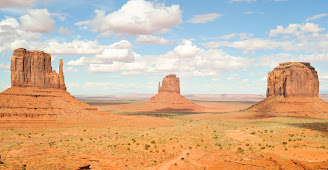
Red Fort
A Sedimentary Rock

SANDSTONE
The sedimentary rock are formed by chemical and mechanical activities of denudation on pre-existing rocks and which deposited at a particular site. After followed many processes deposition, compaction, cementation and recrystallization of pre-existing rocks converts into a sedimentary rock. example: Shale, Sandstone, Limestone, Conglomerate, dolomite etc.
 |
| Sedimentary rock |
The basic points of sandstone rock are following:
1) This is a type of clastic sedimentary rock under Arenaceous category.
In Arenaceous rock have sand grain.
2) Grain size are 2.0mm to 1/16mm
3) Grains shape mostly rounded.
if grain shape sharp angular then it called Grit.
 |
| Grains size of sandstone |
Sandstone forms when cementation of sand particles having grain size in diameter 2.0 mm to 1/16 mm almost rounded in shape. Sandstone may be formed by any type of sand like fluviatile sand, marine, desert also. In the sandstone particles hold together by cementing materials like siliceous, calcareous, agrillaceous or ferruginous. Sandstone are well stratified.
Sandstone mainly composed by quartz, and having small amount of feldspar, garnet, mica etc
 |
| Sandstone |
On the basis of mineral composition sandstone classified:
1) Glauconite sandstone: It contains glauconite mineral. It is a green colour sandstone.
2) Arkose: Grey to reddish in colour. it is rich in felspar mineral.
3) Graywacke: Grey colour sandstone, poorly sorted angular fragments of quartz, felspar, and other fine grains matrix.
4) Freestone: Rich in quartz, and doesn't have any bedding planes or mica.
5) Ganister: it contains mostly angular and subangular quartz grains.
6) Flagstone: Rich in mica, it splits into layers along bedding plane.
Uses:
Sandstone is very useful material in constructing buildings, statues, temples etc.
The Red Fort of India is made up of red sandstone.
एक अवसादी रॉकबलुआ-पत्थर/ सैंडस्टोनअवसादी चट्टान का निर्माण रासायनिक और यांत्रिक गतिविधि द्वारा पहले से मौजूद चट्टानों का विखंडन से किया जाता है। इस प्रक्रिया के बाद जमाव, संघनन, सीमेंटीकरण आदि, पहले से मौजूद चट्टान पुनर्संरचना करने के बाद एक तलछटी चट्टान में परिवर्तित होती है। उदाहरण: शेल, सैंडस्टोन, लाइमस्टोन, कांग्लोमरेट, डोलोमाइट आदि।
Sedimentary rock
बलुआ पत्थर की चट्टान के मूल बिंदु निम्नलिखित हैं: 1) यह एक प्रकार की क्लेस्टिक सेडिमेंटरी रॉक है जो एरेनेसस प्रकृति के तहत है। Arenaceous रॉक में रेत के दाने होते हैं। 2) ग्रैन का आकार 2.0 मिमी से 1/16 मिमी है 3) ग्रैन का आकार ज्यादातर गोल होता है। यदि दाने का आकार तेज कोणीय होता है तो इसे ग्रिट कहते हैं।
Single grain size of Sandstone सैंडस्टोन अच्छी तरह से स्तरीकृत हैं।बलुआ पत्थर का निर्माण तब होता है जब 2 मिमी से 1/16 मिमी व्यास में ग्रैन के आकार वाले रेत कणों का सीमेंटीकरण लगभग आकार में होता है। सैंडस्टोन का निर्माण किसी भी प्रकार की रेत जैसे फ्लूविएट सैंड, समुद्री, रेगिस्तान से भी हो सकता है। बलुआ पत्थर में कणों को सिल्कीस, केल्केरियस, एग्रीलसियस या फेरुजिन जैसी सीमेंट सामग्री द्वारा एक साथ रखा जाता है। सैंडस्टोन मुख्य रूप से क्वार्ट्ज द्वारा रचित, और फेल्डस्पार, गार्नेट, माइका आदि की छोटी मात्रा में है। खनिज संरचना बलुआ पत्थर के आधार पर वर्गीकृत:
1) Glauconite बलुआ पत्थर: इसमें glauconite खनिज होता है। यह हरे रंग का बलुआ पत्थर है।
2) अर्कोज: ग्रे रंग और लाल रंग का होता है। फेल्स्पर खनिज में समृद्ध है।
3) ग्रेवैक: ग्रे रंग बलुआ पत्थर होता है। क्वार्ट्ज, फेल्सपार, और अन्य छोटे-छोटे ग्रैन मैट्रिक्स के poorly sort कोणीय particles होते है ।
4) फ्रीस्टोन: इसमे क्वार्ट्ज में अधिक मात्रा में होता है, और इसमें कोई भी bedding plane या अभ्रक नहीं है।
5) Ganister: इसमें ज्यादातर कोणीय और सबंगुलर क्वार्ट्ज ग्रैन होते हैं।
6) फ्लैगस्टोन: यह अभ्रक में समृद्ध होता है । यह bedding plane के साथ परतों में विभाजित होता है ।
उपयोग
भारत का लाल किला लाल बलुआ पत्थर से बना है।




Very good
ReplyDeleteThankyou
DeleteGood Work..!!
ReplyDeleteThankyou sir
Delete